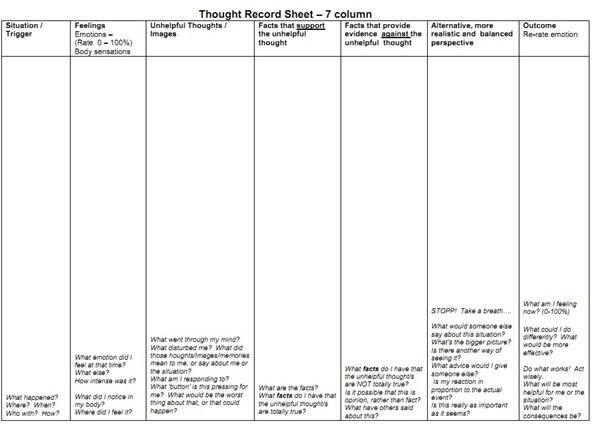The current coronavirus crisis has posed an unprecedented challenge for our mental health. Thus if you’re anxious, fearful, scared, cynical, depressed or struggling to sleep, you’re not alone. As there seems to be a long way before we feel normal again, there are ways to cope until we get there.
To navigate this trying time, a mental health resources called the thought diary might come in handy. Anyone who has ever been in counselling, chances are, they were asked to write a thought diary. A thought diary is a journal where one records their triggers and thoughts to understand how our thoughts and feelings influence our behaviors.
More often than not our thoughts tend to be so automatic that we don’t question or challenge them. For example, “I’ll never be able to find my dream job because I’m not that great.” or “Something must be wrong with me as they do not like me.” It’s astounding if we stop and count the number of negative thoughts that goes through the mind each day. Many a times anxiety stems from us making false assumptions and predictions about future events while we do not have any evidence that this is the case.
Following is a format of the thought record sheet that you can print for yourself.

*Beck’s cognitive model (Beck et al, 1979)
Here’s an example of how to use it:
1. The situation/trigger: Briefly describe the circumstance that led to your unpleasant feelings.
For example, “Meeting an abrasive client”.
2. Feelings: What are your feelings at that very point in time?
For example, “Anxiety, stress.”
3. Unhelpful thoughts/images: Identify negative assumptions or predictions that are going through your mind
For example, “I will not be able to convince the client and my manager is going to think of me as failure”
4. Facts that support the thought: Try to find evidence that supports your unhelpful assumptions or predictions.
For example, “My client does not like me. Anyone else would be able to convince him”
5. Facts that don’t support the thought: Try to find facts that provide evidence against your unhelpful thought.
For example, “Everyone faces difficult clients and I have done my preparation. Prior to this I have convinced many difficult clients.”
6. Give an alternative/more balance thought: After considering the facts, write down a healthier way of thinking.
For example, “While he may be a difficult client I have worked with difficult clients before. I will do my best and I am well prepared.”
7. Outcome: Revaluate how you feel now.
“Less anxious” “less stressed” “reassured”
While this was just one example in which one can use a thought diary, it can be used for multitude of situations and personal struggles. It’s a really helpful tool to overcome automatic negative thoughts and helps us in re-framing our thoughts as we get on with our day.
In the beginning it might seem like a bit of effort to be able to reframe a thought but it gets easier over time. It makes our thoughts more realistic and balanced while refraining our mind to run to the worst case scenario. It lessen our anxiety as we are no longer jumping to conclusions and makes us take notice of our unhelpful automatic thoughts.


